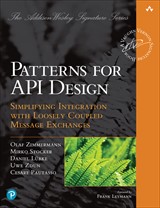
Published: 06 July 2025
Known Uses
In the Dutch energy sector, APIs that deal with operational data are almost always internal (Solution-Internal APIs) or restricted to authorized partners (Community APIs). Examples:
- Grid-connection management portals (DSO back-office systems)
- Meter-reading submission APIs used by certified measurers
- Outage-management interfaces for field technicians
Energieonderbrekingen.nl is a collaborative platform developed by the Dutch grid operators Enexis Netbeheer, Liander, and Stedin. It provides real-time information about electricity and gas outages across the Netherlands, offering an up-to-date overview of current disruptions in the energy network. The platform also offers a Disruptions API for developers to access outage data programmatically. Energy outages are operational data: they’re short-lived, frequently updated, and linked to multiple entities like locations, customers, and equipment.
Job Vacancy API: Counting, retrieving, filtering, and storing new vacancies – provide the full CRUD surface that typifies the Operational Data Holder pattern. Job vacancies are operational data (short-lived and frequently updated).
Behandeldienstconfiguratie beheren (Manage treatment service configuration) API: A RESTful HTTP API for managing treatment service configurations. It allows an administrative body to link an activity, for which it is the competent authority, to a treatment service. Allows authorities to create and update configuration mappings for ‘behandeldiensten’. These configurations change frequently and must be managed via CRUD.
Discussion Input
Two key takeaways we identified:
- Practical modeling of dynamic business data: The Operational Data Holder (ODH) pattern offers a clear, actionable approach for modeling and exposing fast-changing business data through APIs. It highlights the importance of operational resilience and domain-specific extensions (p.185) – aspects often neglected in generic CRUD-based APIs (we believe).
- Enhancing business alignment in microservices: Business alignment is a core principle in microservices architecture. Services should be organized around specific business capabilities to ensure they support concrete functions or value streams. In this context, the ODH pattern primarily acts as a marker pattern in API documentation, helping to align technical interfaces more closely with business concerns (p.188).
We found it helpful that the book clarifies that OPH, MDH, and RDH are all specializations of the Information Holder Resource. They differ in terms of mutability, relationships, and instance lifetimes, collectively forming a distinct category.

Read the complete pattern on api-patterns.org